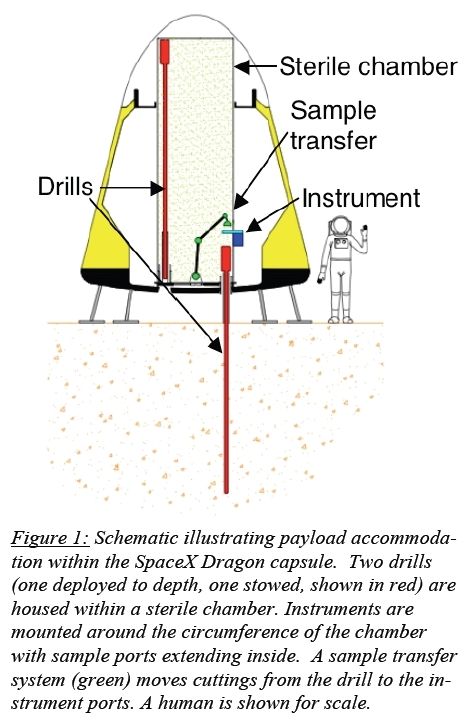The October 31, 2011 preliminary analysis on the proposed "Red Dragon" NASA/SpaceX Mars Discovery class mission has been released. It's looking good so far, and they've moved on to the studies proposed in the conclusion.
Necessary info-bits to movie on are the final numbers on the SuperDraco thrusters, both 100% thrust and the Specific Impulse (ISP.) The DragonRider system that uses them has been approved and is due for demonstration by May. 2012 so that info's not too far off.
The lifting re-entry profile clarifies how they'll scrub off all that energy before lighting up the SuperDraco's.
The mission would use a Falcon Heavy launcher and a Dragon spacecraft modded so instruments could be deployed.
Just for the fun of it I inserted the FH/Red Dragon image into a shot of SpaceX's Launch Complex 40. The current Falcon 9 is the same size as the strap-on boosters used for Falcon Heavy.
PDF......
Full sized imagery attached.

Necessary info-bits to movie on are the final numbers on the SuperDraco thrusters, both 100% thrust and the Specific Impulse (ISP.) The DragonRider system that uses them has been approved and is due for demonstration by May. 2012 so that info's not too far off.
The lifting re-entry profile clarifies how they'll scrub off all that energy before lighting up the SuperDraco's.
The mission would use a Falcon Heavy launcher and a Dragon spacecraft modded so instruments could be deployed.
Just for the fun of it I inserted the FH/Red Dragon image into a shot of SpaceX's Launch Complex 40. The current Falcon 9 is the same size as the strap-on boosters used for Falcon Heavy.
PDF......
Full sized imagery attached.




Comment